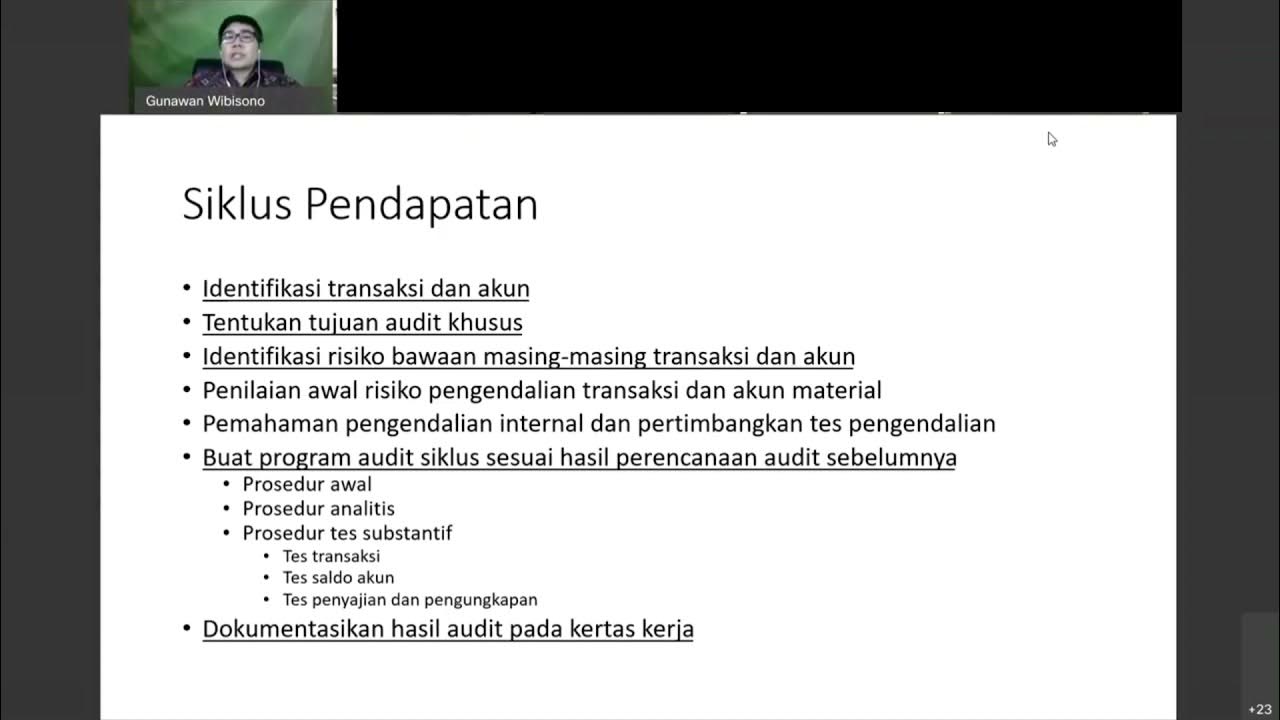Audit Working Papers
Summary
TLDRThe video explores the concept of audit working papers, which are essential documents prepared or obtained by auditors throughout the audit process. These papers link client records to the auditor's conclusions, supporting the audit opinion and providing evidence of work performed. They are crucial for audit planning, supervision, and future audits. The video outlines the purpose of these documents, their forms, and the necessity of maintaining them, emphasizing that they are the auditor's property and integral to ensuring professional accountability.
Takeaways
- 📄 Audit working papers are essential documents prepared or obtained during an audit, linking the auditor's report to the client's records.
- 🔍 These papers provide a comprehensive overview of the audit process, from planning to conclusion.
- 📊 They support the auditor's conclusions and ensure reasonable assurance for the audit opinion.
- 📝 Audit working papers serve as evidence of the work performed, helping defend against claims of negligence.
- 📚 They provide historical context and insight into the client's operations.
- 🔗 The documentation forms a basis for recurring audits, guiding future audit procedures.
- 🗂 Audit working papers are classified into permanent files (useful for multiple periods) and current files (specific to the current audit).
- 💼 The auditor retains ownership of these documents, with some extracts potentially shared with the client.
- ⚖️ There are professional requirements for preserving audit working papers to ensure compliance.
- 💡 Overall, these papers are critical for substantiating the auditor's opinion and work performed during the audit.
Q & A
What are audit working papers?
-Audit working papers are documents prepared or obtained by the auditor during the audit process, containing essential facts about the accounts and records under review.
Why are audit working papers important?
-They provide a link between the auditor's report and the client's records, support the auditor's conclusions, and serve as evidence of the work performed.
What stages of the audit do working papers cover?
-Audit working papers cover the entire audit process, from planning to conclusion, providing an overall understanding of the audit.
What is the purpose of audit working papers?
-They help in supervising the audit, provide evidence of work performed, offer insights into the client's business, and form the basis for the audit opinion.
What are the two types of audit files maintained?
-The two types are the Permanent Audit File, which holds documents relevant for multiple audit periods, and the Current Audit File, which contains documents specific to the current audit period.
How should audit working papers be organized?
-They should be organized into permanent and current files based on the relevance of the documents to the audit periods.
What forms can audit working papers take?
-Audit working papers can exist in various formats, including paper, film, and electronic media.
Who owns the audit working papers?
-Audit working papers are the property of the auditor, who is entitled to retain them but may share certain documents with the client at their discretion.
What is the relationship between audit working papers and the audit opinion?
-Audit working papers provide the necessary evidence and support for the auditor's conclusions, forming the basis for the audit opinion expressed.
Why is documentation of audit working papers necessary?
-Documentation is essential as it underpins the audit opinion, serves as evidence of the auditor's work, and fulfills professional requirements for preservation.
Outlines

This section is available to paid users only. Please upgrade to access this part.
Upgrade NowMindmap

This section is available to paid users only. Please upgrade to access this part.
Upgrade NowKeywords

This section is available to paid users only. Please upgrade to access this part.
Upgrade NowHighlights

This section is available to paid users only. Please upgrade to access this part.
Upgrade NowTranscripts

This section is available to paid users only. Please upgrade to access this part.
Upgrade NowBrowse More Related Video
5.0 / 5 (0 votes)





